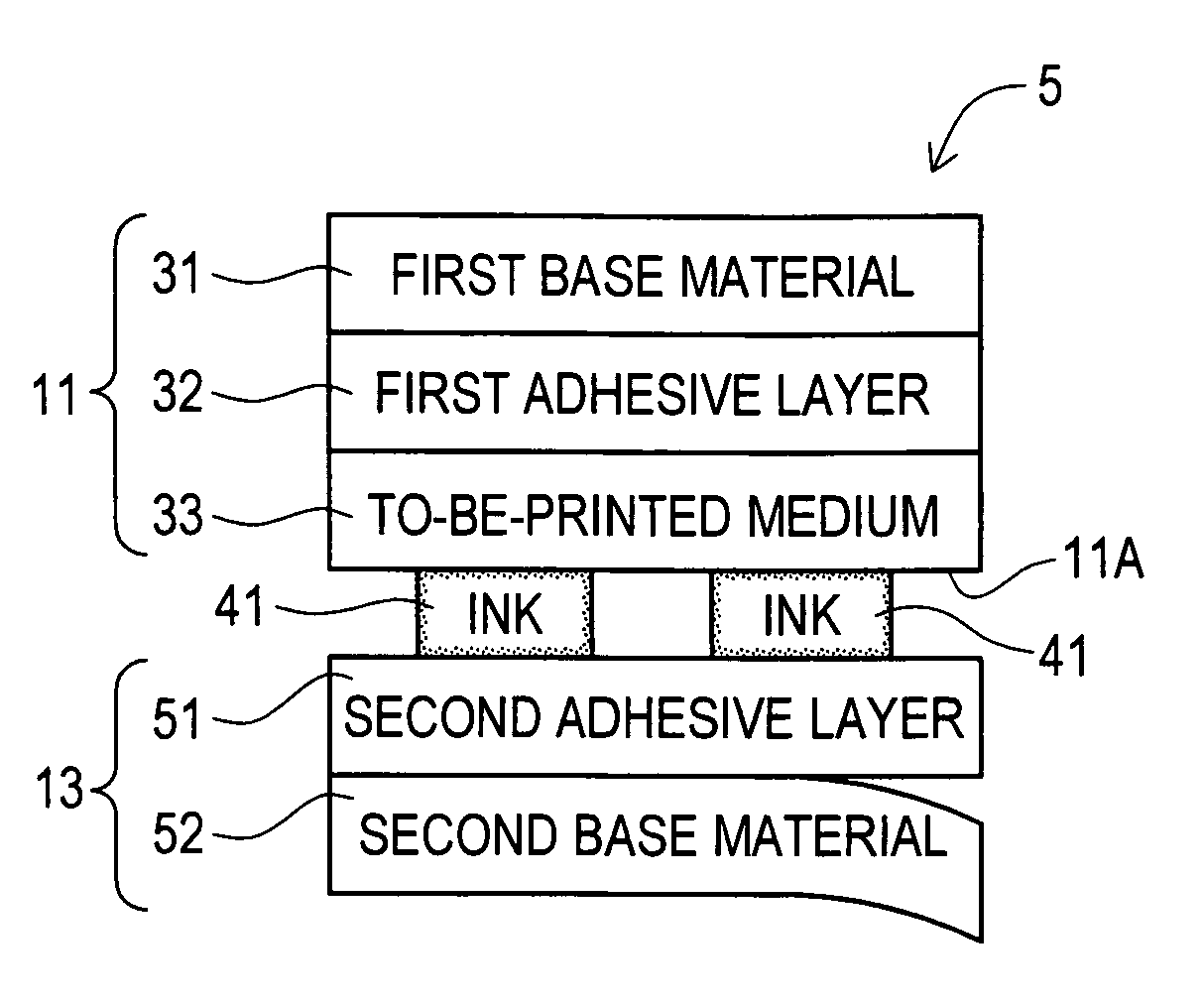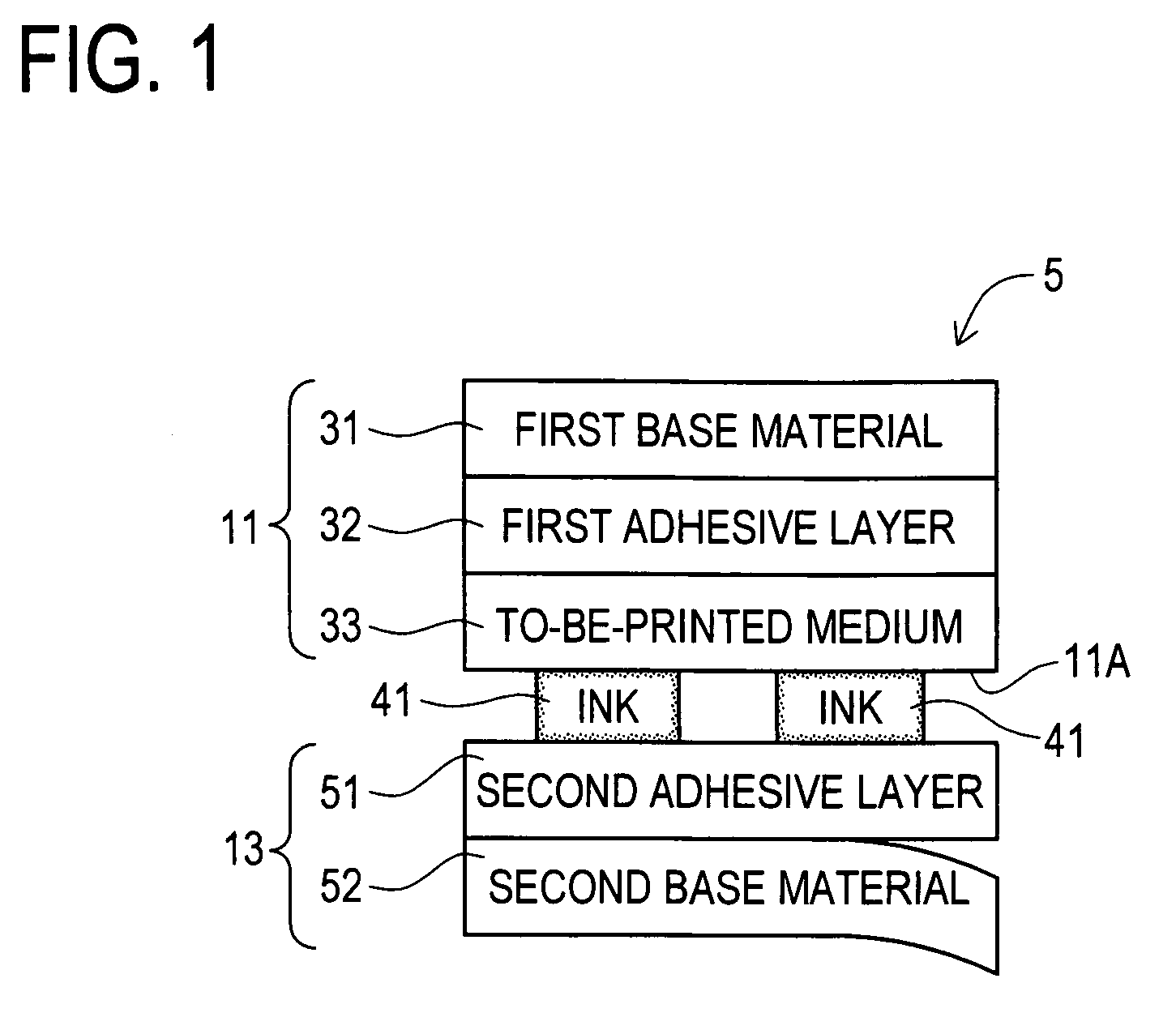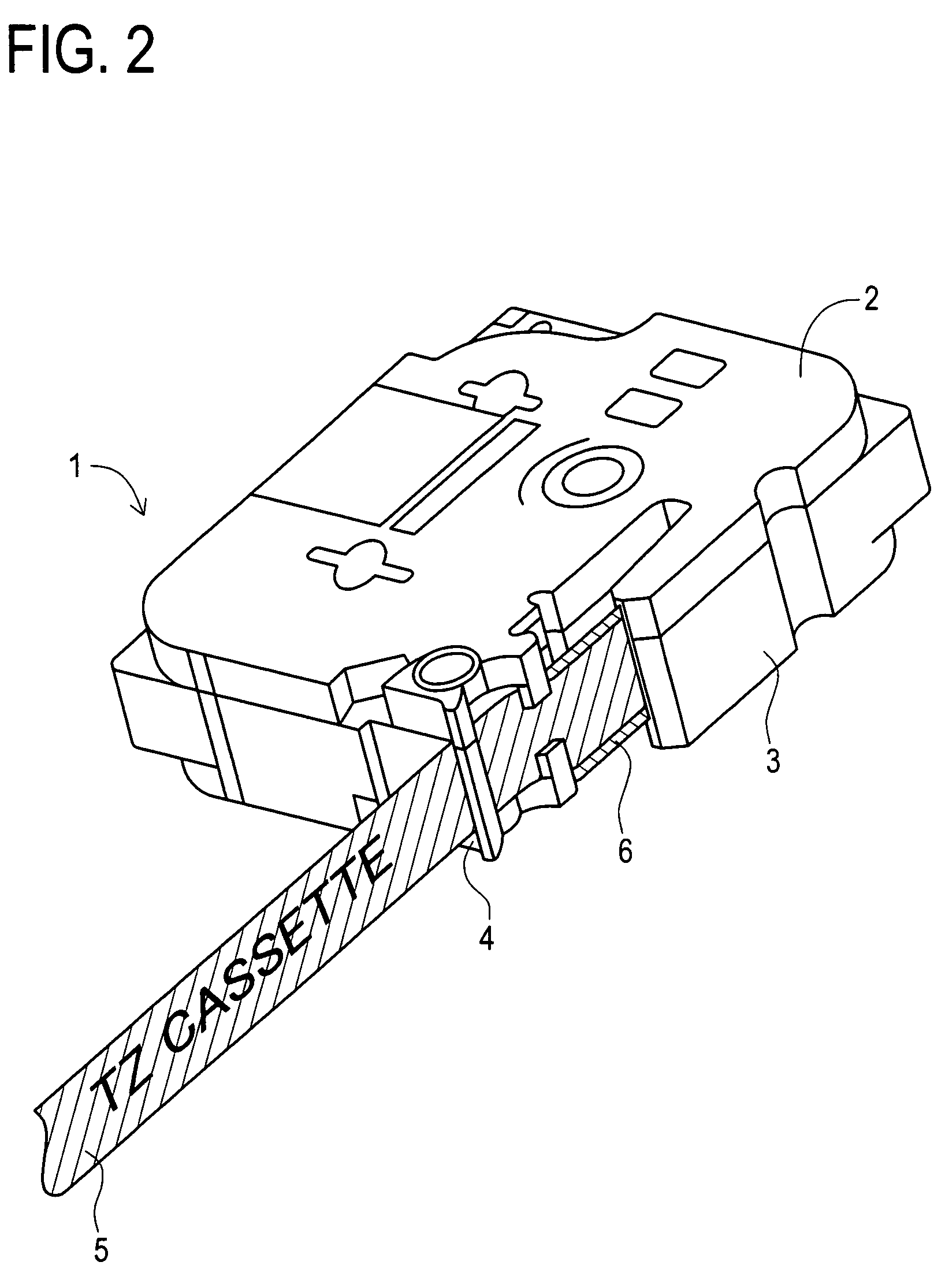Print tape and a print cassette
a technology of print cassette and tape, which is applied in the field of print cassette, can solve the problems of conventional “laminated tape” being likely to gradually come unstuck from the curved surface of the adherend, and the tendency of the adherend to gradually come unstuck from the curved surfa
- Summary
- Abstract
- Description
- Claims
- Application Information
AI Technical Summary
Benefits of technology
Problems solved by technology
Method used
Image
Examples
first embodiment
[0351]Incidentally, when the print cassette 1 of the first embodiment is set in a cassette mount of a tape printer, a thermal head H1 of the tape printer exists on the thermal head arrangement portion 20. Then, the first tape 11 and the ink ribbon 6 are nipped by the thermal head H1 and a platen roller P1 of the tape printer opposing the head H1.
[0352]On the other hand, the second tape 13 has a second adhesive layer which is formed by being coated a second base material (a release sheet) having a sheet thickness of approximately 53 μm with a second adhesive agent of approximately 16 μm thick. Then, the second tape 13 is wound on the tape spool 12 with the second base material side outside. The second tape 13 wound in this way is guided by the feed roller 22 while the adhesive-coated surface of the second adhesive layer and the printing surface of the first tape 11 are overlapped with each other. As a result, the second tape 13 adheres to the first tape 11, and discharged outside the...
second embodiment
[0421]Incidentally, when the print cassette 101 of the second embodiment is set in a cassette mount of a tape printer, a thermal head H2 of the tape printer exists on the thermal head arrangement portion 120. Then, the first tape 111 and the ink ribbon 106 are nipped by the thermal head H2 and a platen roller P2 of the tape printer opposing the head H2.
[0422]On the other hand, the third tape 113 has a third adhesive layer which is formed by being coated the first face side of a third base material (a base film) composed of a “PET sheet” having a sheet thickness of approximately 12 μm with a third adhesive agent of approximately 20 μm thick. The second face side of the third base material is coated with a fourth adhesive agent so as to form a fourth adhesive layer having a thickness of approximately 16 μm. Further, a fourth base material (a release sheet) having a thickness of approximately 53 μm adhered to the fourth adhesive layer. The third tape 113 is wound on the tape spool 112 ...
third embodiment
[0491]Incidentally, when the print cassette 201 of the third embodiment is set in a cassette mount of a tape printer, a thermal head H3 of the tape printer exists on the thermal head arrangement portion 220. Then, the first tape 211 and the ink ribbon 206 are nipped by the thermal head H3 and a platen roller P3 of the tape printer opposing the head H3.
[0492]On the other hand, a second tape 213 has a second adhesive layer (a weak adhesive layer) which is formed by being coated with the first face side of a second base material (a handling auxiliary film) composed of a “PET sheet” with a second adhesive agent (a weak adhesive agent) of approximately 25 μm thick. The second tape 213 is wound on the tape spool 212 with the second base material side outside. The second tape 213 wound in this way is guided by the feed roller 222 while the adhesive-coated surface of the second adhesive layer and the printing surface of the first tape 211 are overlapped with each other. As a result, the sec...
PUM
 Login to View More
Login to View More Abstract
Description
Claims
Application Information
 Login to View More
Login to View More - R&D
- Intellectual Property
- Life Sciences
- Materials
- Tech Scout
- Unparalleled Data Quality
- Higher Quality Content
- 60% Fewer Hallucinations
Browse by: Latest US Patents, China's latest patents, Technical Efficacy Thesaurus, Application Domain, Technology Topic, Popular Technical Reports.
© 2025 PatSnap. All rights reserved.Legal|Privacy policy|Modern Slavery Act Transparency Statement|Sitemap|About US| Contact US: help@patsnap.com



